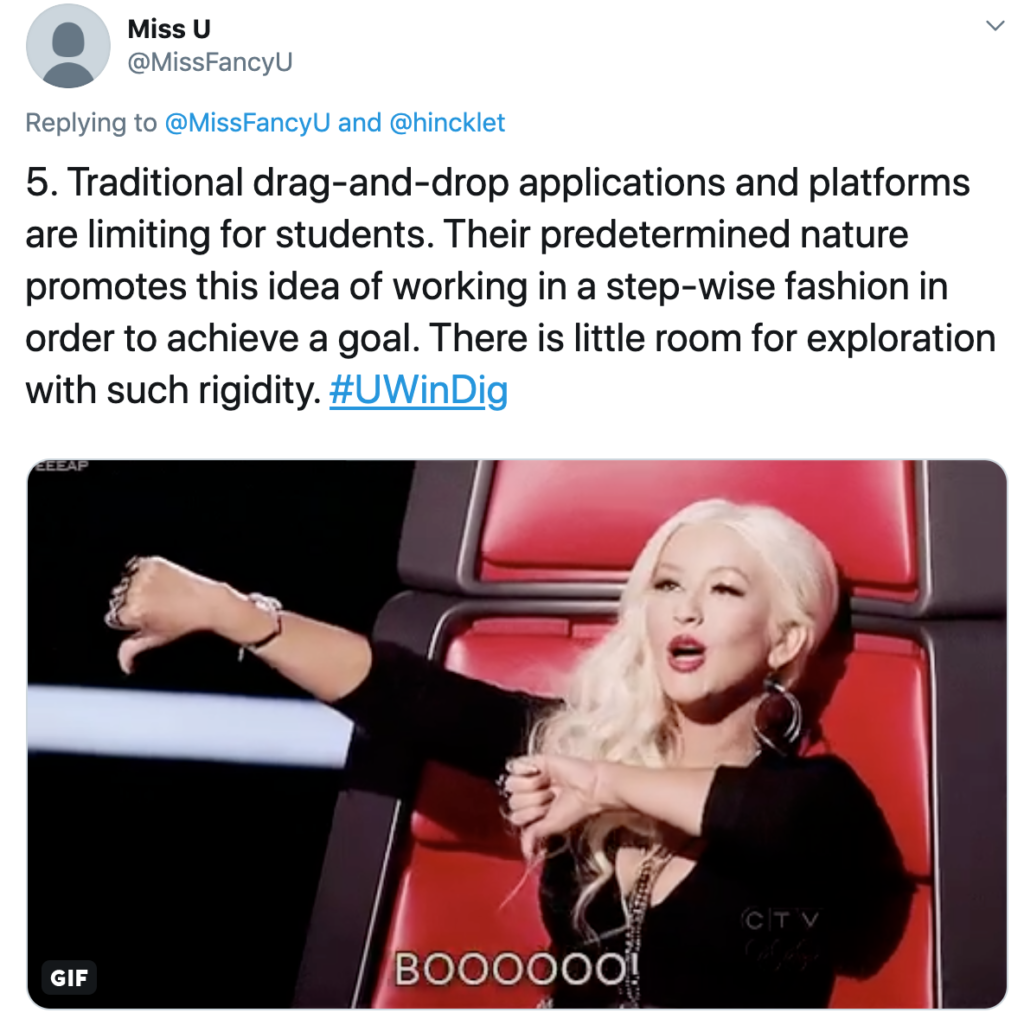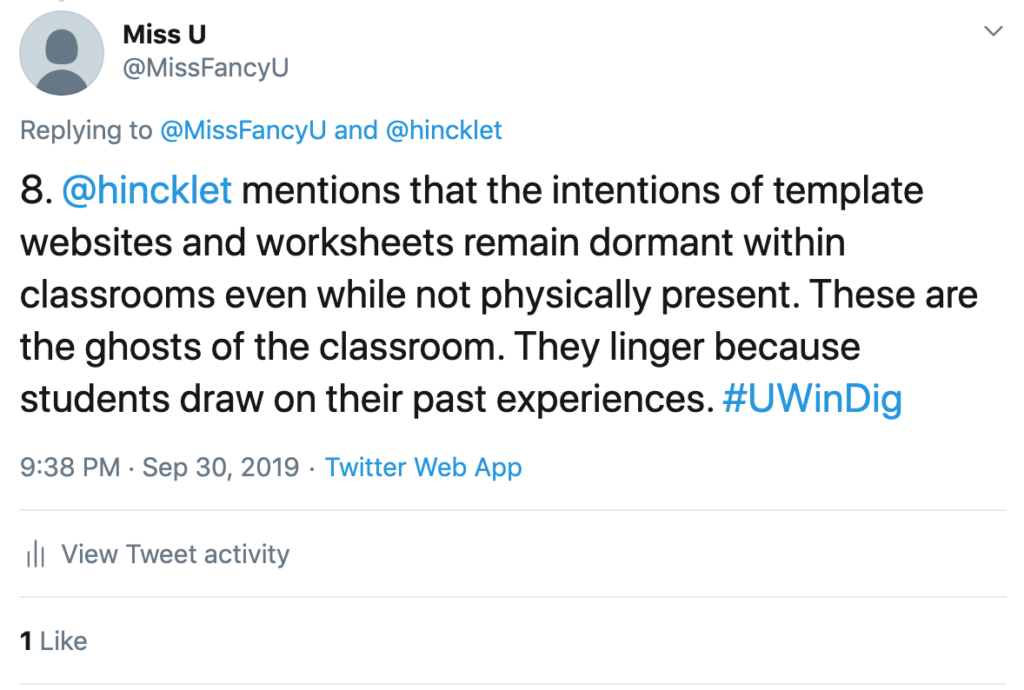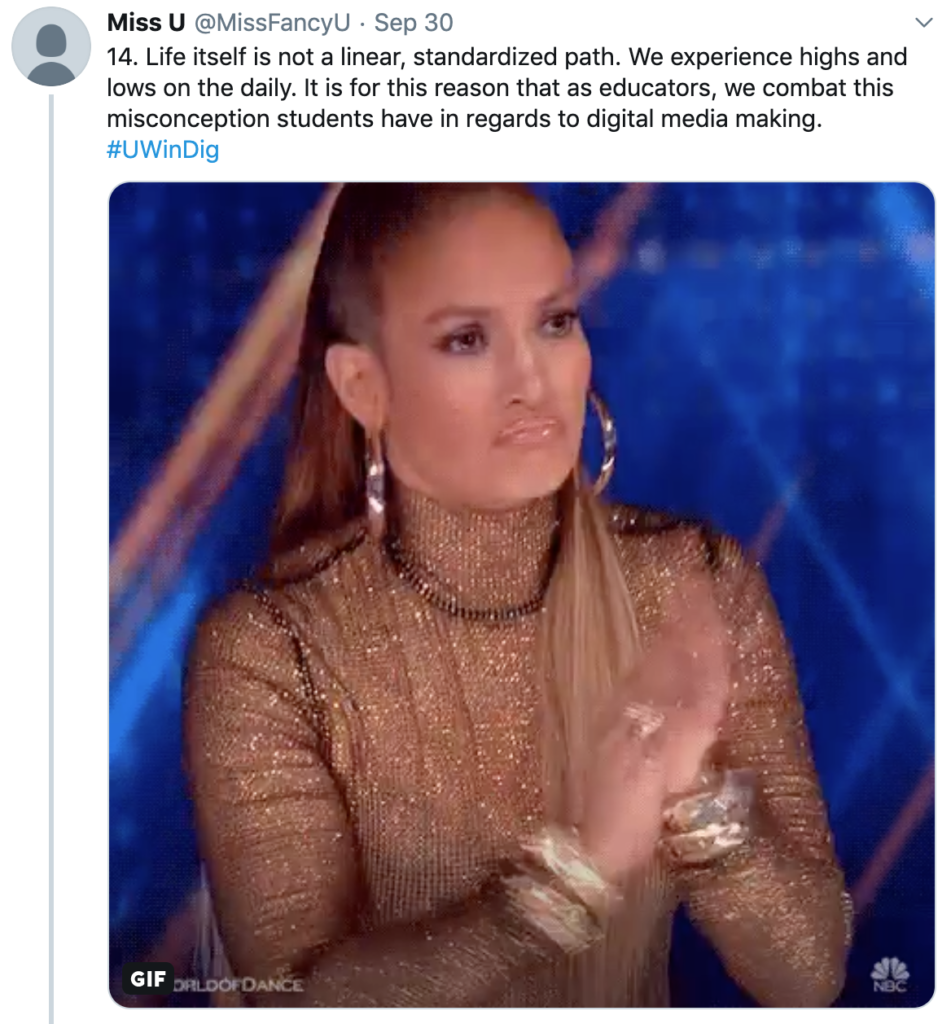For our second multimedia reflection, I chose to explore the Collaborator Module by Ontario Extend and developed a Sketchnote. You can find an embedded image of my Sketchnote below:
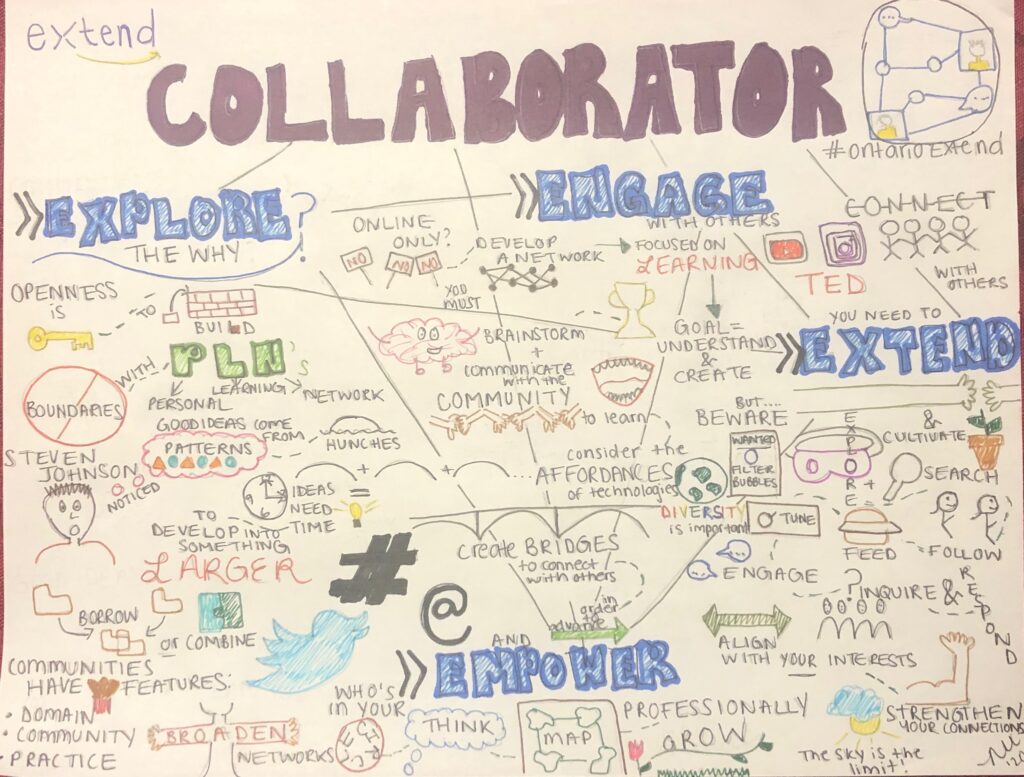
This was the first time I have ever developed a Sketchnote because I typically shy away from anything that involves demonstrating my artistic abilities (or lack thereof). In our previous multimedia reflection I developed a Twitter essay. I have been an active member of the Twitter community for several years, thus it is a platform that I feel comfortable with. Developing a Sketchnote forced me to step outside of my comfort zone and to my surprise, I truly enjoyed developing this artifact.

Much like a Twitter essay, a Sketchnote is a platform with a visual capacity. However, I felt as though in the development of this artifact I was less restricted in my abilities to incorporate text and visual elements to represent the key points of the Collaborator Module. I specifically chose particular fonts and colours, as well as creative cartoons, to enhance my Sketchnote.
The Collaborator Module consists of four main sections: Explore, Engage, Extend, and Empower. The Explore tab focuses on explaining why it is important to collaborate. Teaching and learning requires collaboration because you can develop and extend your personal learning network (PLN). This tab explores the ideas that Steven Johnson proposes regarding good ideas. In his video, “Where Good Ideas Come From,” Johnson explains that networks help to spread ideas. Overtime, Johnson has noticed recurring patterns associated with the development of good ideas. He describes what is known as ‘The Slow Hunch’: that ideas are individual hunches and as time progresses, the collaboration and collision of multiple hunches develops breakthrough ideas.
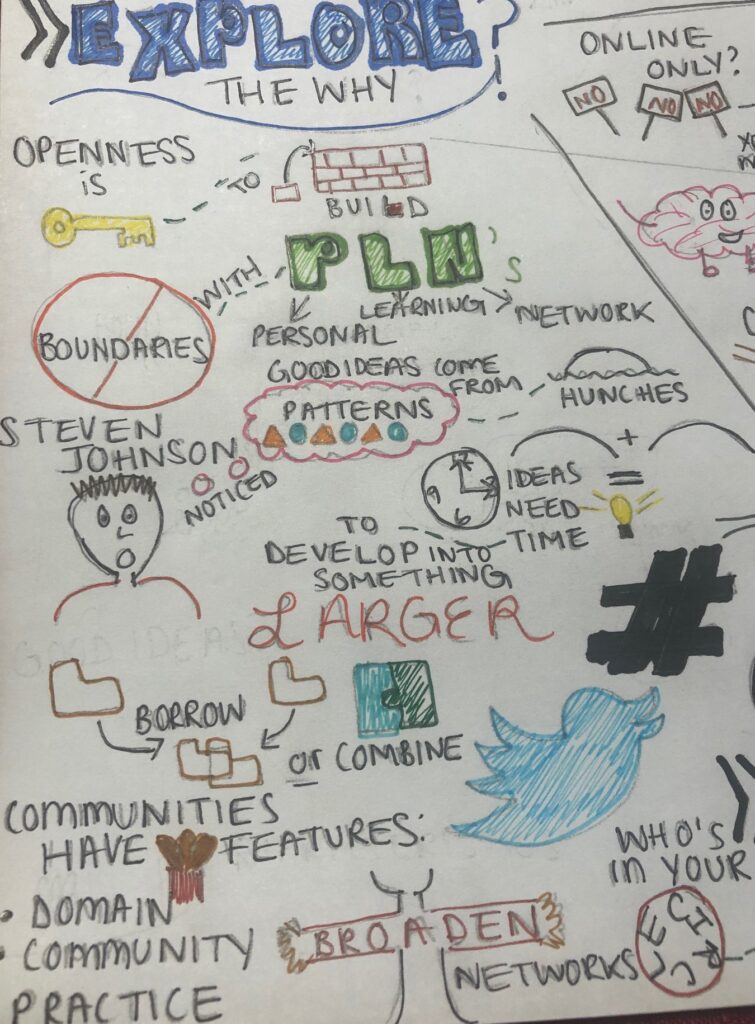
Alec Couros then explains The Power of Twitter and how educators can use twitter effectively in their practice. Rather than hoarding our knowledge, we as educators are encouraged to use Twitter as a way to broaden our networks. Teachers are able to collaborate, connect, and share through Twitter. The platform uses the hashtag as a key digital literacy. #OntarioExtend

The Engage tab goes into further detail about PLN’s. Marc-Andre Lalande explains that a PLN is not limited to only online interactions, but its rather the existence of online interactions that makes a PLN extraordinary. We may not personally know these people within our network, but we together have common learning goals and interests.
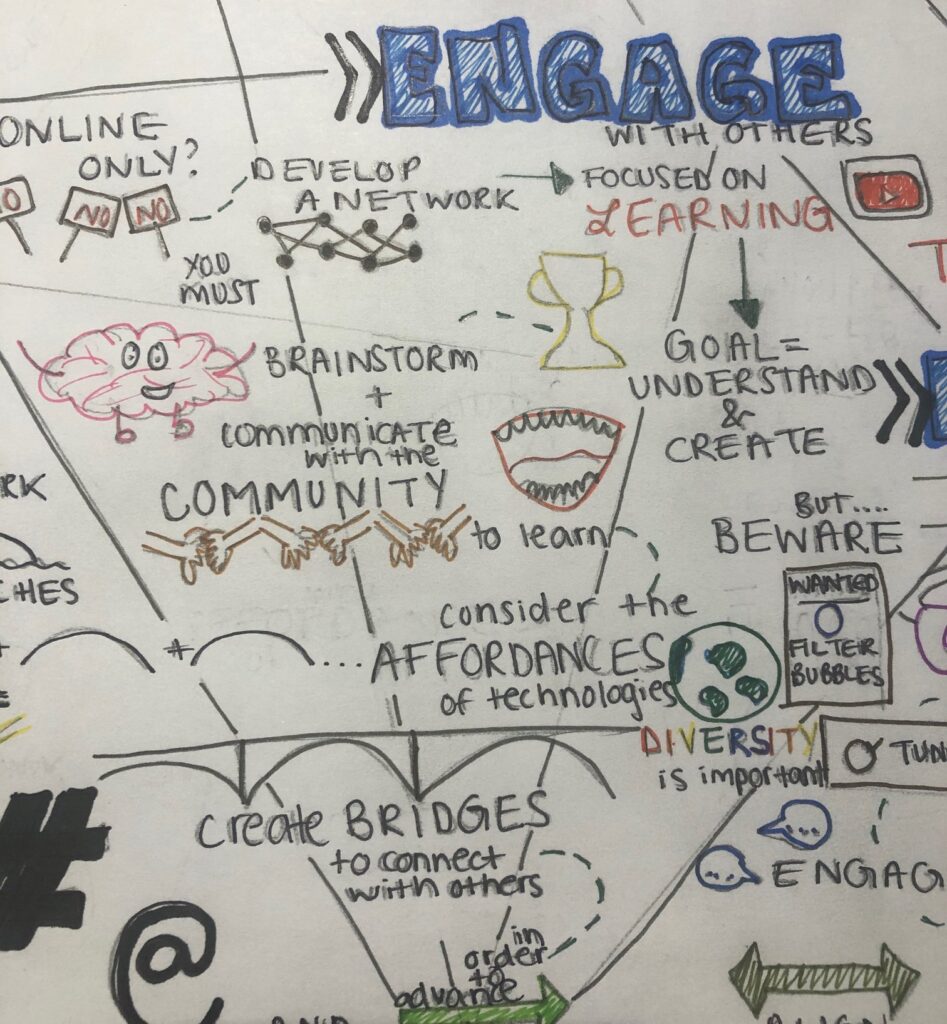
A PLN emerges from the Theory of Connectivism, which explains how the affordances of digital technologies and networks serve as bridges to connect us to, and encourage creativity between, the community.

The Extend tab describes how to cultivate a PLN. PLN’s do not simply emerge- they require growth over time. The cultivation of a PLN requires one to associate with people of similar interests. Furthermore, the strength of connections will develop with increased interaction and engagement. As professionals, we must always remember to think before we post as actions can have consequences.
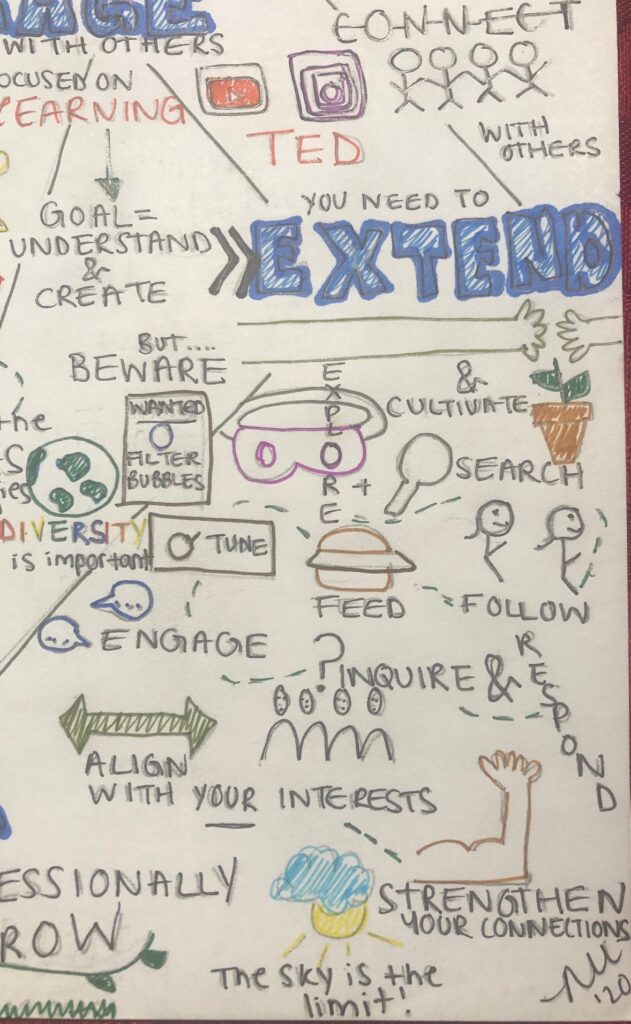
In his TED Talk, Beware of Online Filter Bubbles (TED 2011), Eli Parser explains the actions of an invisible algorithmic web. To develop a more well-rounded and diverse PLN, we want to see information that is relevant, important, uncomfortable, and challenging in order to exist within a more realistic universe of information. #DontBeShyDiversify
The Empower tab briefly dives into mapping your PLN. Using different digital tools, we must consider how we will use these to develop our PLN’s and ultimately grow as professionals. Consistent pedagogical reflection will support our teaching and learning.

In short, the Collaborator Module stresses the importance of interpersonal association to develop networks. Our cultivated PLN’s will ultimately enhance our teaching practice and will allow for a long-term and continuous professional growth.
Thanks for reading!

